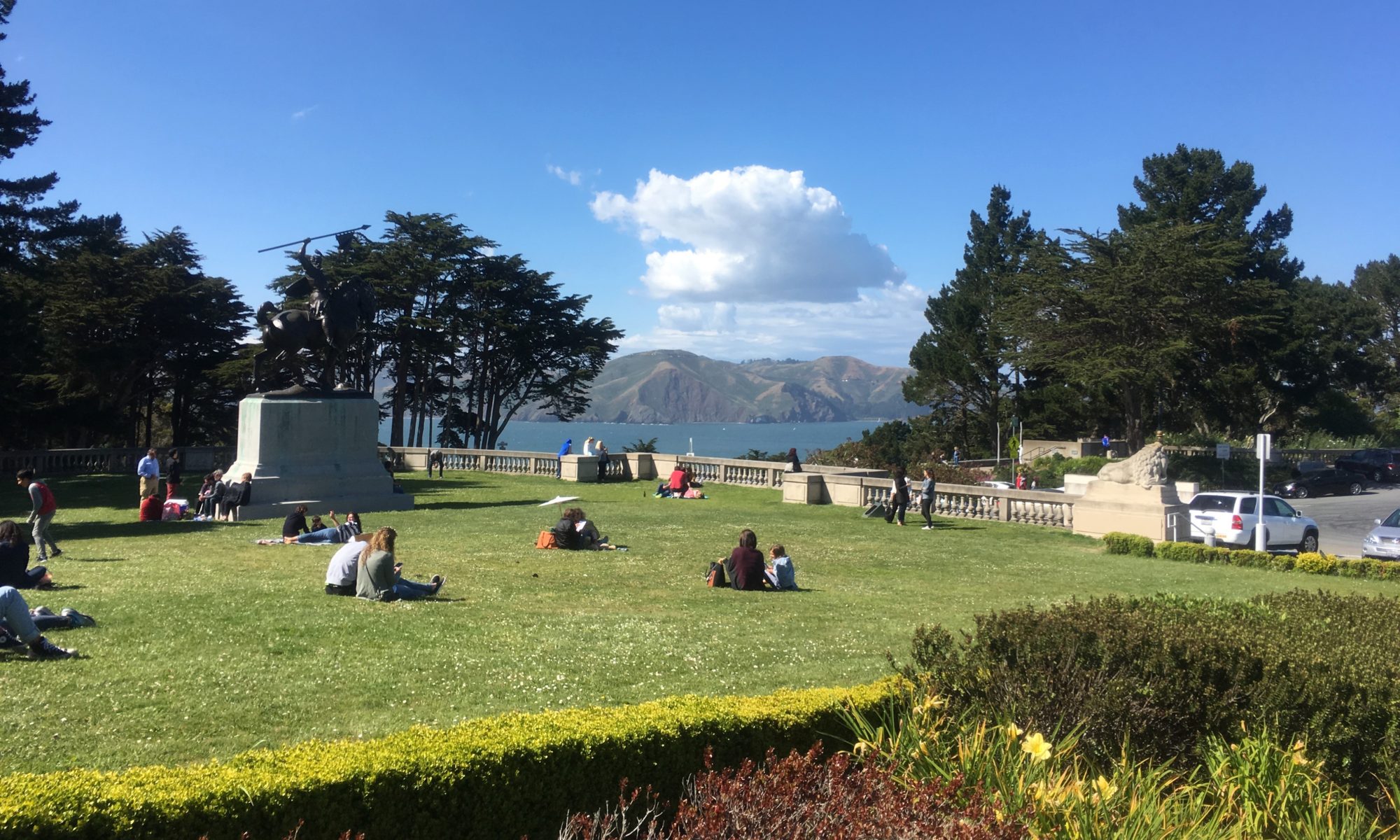By Emily Margaretten : 48hills – excerpt
Mist swirls through soaring Monterey pine trees, threatening to envelop the gated enclosure below. A steep embankment protects a community garden from the wind and fog, offering sanctuary to hundreds of species of plants that have pushed roots and shoots past crumbling concrete to reclaim a small parcel of land in one of the most densely populated cities in the country.
Erick Campbell, caretaker of the garden, smiled impishly and attacked a slab of concrete with a pickax. Beads of sweat dotted his forehead. “Daly City,” he said between swings, “is the worst. There’s no urban canopy, something like 3.9 percent.”
An urban tree canopy is the layer of leaves, stems, and branches that cover the ground. It averages around 27 percent for US cities. Daly City is an extreme outlier. It’s “an impervious concrete jungle,” as Project Green Space puts it.
Campbell pointed to the ground, where the rich sediment, a combination of 20 years of decaying vegetation and protective mulch, has created a thriving habitat for seedlings and saplings to grow.
“It’s made its transition from concrete back to earth,” Campbell observed. “Kind of silly to think they just want to put it back to concrete, you know?”…(more)
What is another garden covered by luxury housing in a state that has removed single family zoning in favor of by right and no rights for residents and voters to determine how we want to live. You may drop those illusions at the border.
The state that claims to be following the “new green policy“ slate that is leading the country down the road to environmental excellence has started us down the road of destroying our natural environment by cutting trees, plowing over gardens, limiting lawns, and withholding water from farms and fish to plant more housing. This is a small list of actions the state is taken to sell our land and resources to the highest bidders and wall street investors. There are no-bid options for all cash deals all around.
Your state representatives were sold to you by global investors pushing us into the 2022 gold rush. They are up-zoning and gentrifying the state, leading the way to the highest levels of inflation that will ripple across the country and food prices escalate and the parties quibble over social matters and the media keeps us entertained.
Everything you thought you loved about the state will be short-lived unless we pass the ballot initiative to stop the land grab in the anti-garden state. Rather than compromise or give the voters a chance to suggest other ways to solve the problems, Sacramento politicians have hidden their intentions and ignored the voices of opposition.
Ourneighobrhoodvoices.com is the place to go to find out how you can join the efforts to stop this outrage that starts with the takeover of our backyards and rolls across our cities building “housing for everyone.”

